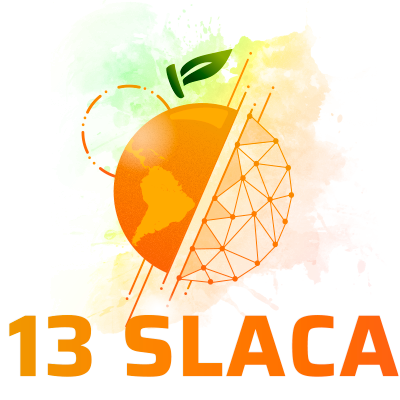Anais do Simpósio Latino Americano de Ciências de Alimentos
Anais do 13º Simpósio Latino Americano de Ciência de Alimentos
CARBOXYMETHYL CELLULOSE AND SODIUM ALGINATE EDIBLE COATING TO PRESERVE THE QUALITY OF STRAWBERRY
Como citar esse trabalho?
Para citar este trabalho use um dos padrões abaixo:
Como citar esse trabalho?
Strawberry is a small fruit considered one of the most appreciated berries by the Brazilian population, for its pleasant flavour and source of vitamin C. However, it is a highly perishable fruit due to postharvest pathological problems, mainly caused by Botrytis cinerea fungus. To decrease this problem, edible coatings can be an alternative because are considered an environmentally friendly technology, used to preserve and extend the postharvest shelf life. The aim of this study was to evaluate two edible coatings: the sodium alginate and carboxymethyl cellulose to keep quality and extend shelf life of strawberries. The produced coat was obtained from the spreading of film-forming solution on glass petri dishes and dried for 48 h in a vacuum oven to study its physical and chemical characteristics. Strawberries were immersed in the coating solution and stored at refrigeration temperature (2–4.5°C). Thermogravimetric analysis, film thickness and weight loss percentage of the coated and control samples were performed. The thickness of each film was measured using a micrometer. Thermogravimetric analysis was performed using a thermogravimetric analyzer. The films exhibited thickness from 0.015 to 0.06 mm. Weight loss percentage were not significantly different (p>0.05) in coated strawberries compared to the control. Thermogravimetric analysis showed similar decomposition curves for films produced. The results showed good thermic stability of films. Edible coating prevented Botrytis injuries when stored up to 5 days at refrigeration temperature (2–4.5°C). Concerning the weight loss percentage there was no significative difference between coated and control. Therefore, with a visual observation it was verified that strawberry coated presented higher quality characteristics than control. The next stage of the project will be dedicated to functionalizing the coating with nanoparticles with antimicrobial potential and evaluate how this functionalization interferes on the biological activity and other rheological properties of the films.
- 1 Universidade Federal do Rio de Janeiro
- 2 Universidade Federal Rural do Rio de Janeiro
- 3 Empresa Brasileira de Pesquisa Agropecuária
- 4 Embrapa Tecnologia de Alimentos
- 5 Embrapa Agroindústria de Alimentos / Bolsista produtividade CNPq / EMBRAPA
- 3. Formulação e processamento de alimentos (FP)
Discussões Científicas de Qualidade
Com ~200 mil publicações revisadas por pesquisadores do mundo todo, o Galoá impulsiona cientistas na descoberta de pesquisas de ponta por meio de nossa plataforma indexada.
Confira nossos produtos e como podemos ajudá-lo a dar mais alcance para sua pesquisa:
Como citar esse proceedings?
Esse proceedings é identificado por um DOI , para usar em citações ou referências bibliográficas. Atenção: este não é um DOI para o jornal e, como tal, não pode ser usado em Lattes para identificar um trabalho específico.
Verifique o link "Como citar" na página do trabalho, para ver como citar corretamente o artigo

